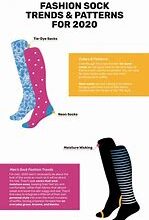When it comes to education, there are numerous methods and approaches that schools employ to engage students and prepare them for their future. However, there are several common myths that often circulate, misguiding the public about the nature and quality of school education. Separating fact from fiction is essential to ensure that students receive the support they need to pursue their passions and excel academically.
One prevalent myth is the belief that school education solely focuses on memorization and rote learning. While there may be instances where memorization is an effective approach, studies show that a more hands-on and collaborative instructional approach encourages critical thinking and enhances overall performance. Schools strive to provide a curriculum that encourages students to think creatively, explore and present their ideas, and engage in collaborative activities.
Another misconception is that extracurricular activities have no impact on a student’s academic performance. In reality, engaging in extracurricular activities, such as sports, arts, or clubs, can have a positive impact on a student’s confidence and overall well-being. These experiences can also lead to enhanced performance in the classroom as they provide a break from standardized instruction and allow students to apply their learning in a real-world context.
It is also important to address the myth that educational approaches in schools are a one-size-fits-all matter. Schools recognize the unique nature of each student and strive to meet their individual needs by providing a variety of instructional approaches. Whether it is through differentiated instruction or personalized learning plans, schools strive to enhance the quality of education by tailoring it to the specific needs and strengths of each student.
Lastly, there is a misconception that schools solely focus on academics, stifling the development of other essential skills and qualities. In reality, schools understand the importance of holistic development and provide support for students to explore their passions and interests beyond the traditional academic curriculum. By encouraging a well-rounded education that encompasses not only academics but also extracurricular activities and other talents, schools can help students develop into confident and capable individuals ready to thrive in the collaborative world.
- Common Misconceptions About School Education Exposed
- Myth School Education Kills Creativity
- Fact: Diverse Teaching Methods Foster Creativity
- Fact: Art and Music Programs Enhance Creative Thinking
- Myth School Education is One-Size-Fits-All
- Fact: Personalized Learning Tailors Education to Individual Needs
- Fact Differentiation Promotes Individual Growth
Common Misconceptions About School Education Exposed
When it comes to school education, there are several common misconceptions that need to be debunked. One of the most prevalent myths is the idea that a one-size-fits-all approach is the best way to educate students. In reality, every individual has unique interests, strengths, and learning styles that need to be taken into account.
Another misconception is that academic performance is the sole indicator of a student’s success. While academic success is important, it is not the only factor that measures a person’s abilities. In fact, a supportive and creatively stimulating environment that promotes personal and collaborative approaches to learning can have a positive impact on a student’s overall development.
Another myth is that homework is the only way to provide quality education. While homework can be an essential part of the learning process, it is not the sole method of teaching. Differentiation and multiple approaches to teaching can help meet the unique needs of each student and promote a deeper understanding of the subject matter.
Furthermore, there is a misconception that extracurricular activities have no real-world impact on a student’s education. In reality, participating in extracurricular activities can promote teamwork, self-expression, and the development of essential life skills. These experiences can have a positive impact on a student’s overall growth and preparation for the future.
Lastly, there is a misconception that academics should be the sole focus of school education. While academic success is important, it should not be the only goal. A well-rounded education should also aim to promote social skills, emotional intelligence, and critical thinking abilities, which are essential for navigating real-world situations.
In conclusion, it’s important to debunk these common misconceptions about school education and recognize the importance of personalized and collaborative approaches to learning. By promoting a supportive and diverse educational environment, we can ensure that students receive a well-rounded education that prepares them for success in all aspects of life.
Myth School Education Kills Creativity
One common myth about school education is that it stifles creativity. Many people believe that the strict instruction, heavy homework, and standardized testing in schools limit students’ ability to think creatively and come up with innovative solutions.
However, this is far from reality. In fact, school education aids in enhancing creativity in students by providing them with numerous opportunities to unleash their creative potential.
While it is true that some instructional methods and programs may not cater solely to creative intelligence, schools, especially in recent years, have been actively incorporating more hands-on and individualized teaching approaches that foster creativity.
In a classroom setting, various factors contribute to the promotion of creativity. Collaborative projects and group work are popular teaching methods that allow students to engage with their peers and come up with unique and creative solutions to problems. Real-world examples and applications are also used to make the learning process more engaging and relevant.
It is crucial to note that creativity does not solely depend on the nature of the instruction. Students have different strengths and talents, and schools provide them with the opportunity to explore and develop their creative abilities in various subjects.
Moreover, creativity is not limited to artistic fields. It is a critical tool in almost every aspect of life, including scientific research, technology, and entrepreneurship. Schools understand the significance of creativity and aim to incorporate it into their curriculum to help students meet the challenges of the future.
While it is true that some standardized tests may not fully capture a student’s creative abilities, it does not mean that schools disregard or discourage creativity. Standardized tests are just one measure of performance, and schools recognize the need for a broader evaluation system that acknowledges and rewards creativity.
In conclusion, the myth that school education kills creativity is a misconception. Schools provide ample opportunities for students to think creatively, discover their strengths, and develop innovative solutions. The reality is that schools have recognized the importance of creativity and strive to incorporate it into their instructional approaches to better prepare students for their future.
Fact: Diverse Teaching Methods Foster Creativity
In the world of education, there is a belief that teaching should follow a one-size-fits-all approach. However, research has debunked this misconception and revealed that diverse teaching methods actually foster creativity and aid in the learning process.
One of the most significant factors that impacts a student’s performance and engagement in the learning process is the instructional approach used by their teachers. Each student is unique, with different learning styles, talents, and ideas. Providing a diverse range of teaching methods encourages students to think creatively, strive for self-expression, and engage actively in their academic pursuits.
Traditional teaching methods, such as lectures and standardized tests, often limit students’ ability to express themselves and showcase their unique talents. This misconception risks killing their creativity and hindering their growth. On the other hand, diverse teaching methods help students explore and develop their creativity.
A diverse curriculum that incorporates various instructional approaches encourages students to think critically, solve problems creatively, and apply their knowledge in practical ways. By incorporating hands-on activities, group discussions, and project-based learning, teachers can create an environment that supports and nurtures students’ creative thinking abilities.
Extracurricular activities also play a significant role in fostering creativity. By providing opportunities for students to explore different interests and hobbies, schools give them a tool to express themselves creatively outside of the standard curriculum. This extracurricular engagement helps build confidence and encourages students to think outside the box.
In reality, a supportive and diverse teaching approach aids students in developing essential skills for the future. Creativity is a valuable tool in the ever-changing world, and by embracing diverse teaching methods, schools can help students unleash their creative potential and prepare them for success in the modern workforce.
Fact: Art and Music Programs Enhance Creative Thinking

Contrary to popular belief, art and music programs in schools are not just a matter of creativity and self-expression, but they have a crucial role in enhancing overall academic development. Research has shown that engagement with art and music can significantly improve creative thinking skills, which are essential for problem-solving and finding innovative solutions.
While some may argue that art and music classes are just a form of leisure or a way to kill time, the reality is quite the opposite. These programs provide opportunities for students to explore different artistic concepts, develop their own unique styles, and pursue their passions. Furthermore, they encourage hands-on learning and active participation, allowing students to apply what they learn in a practical manner.
One common myth is that art and music classes only cater to students with artistic abilities or interests. However, this misconception fails to recognize the diverse range of intelligences and interests that students possess. Art and music programs are designed to challenge students and provide them with the same opportunities for learning and growth as any other instructional subject.
Art and music education not only helps students develop their creative thinking abilities, but it also has a positive impact on their overall cognitive development. Research has found that students who engage in art and music tend to perform better in other academic subjects as well. This is because the skills learned through artistic expression, such as problem-solving, critical thinking, and self-discipline, can be transferred to different situations and applied in various academic contexts.
Moreover, art and music programs offer a break from the traditional academic curriculum, providing students with a refreshing and challenging learning experience. By incorporating different teaching methods and encouraging self-expression, these classes allow students to explore their interests and showcase their individuality.
In conclusion, the notion that art and music programs are non-essential or less important than traditional academic subjects is a myth. These programs play a crucial role in enhancing students’ creative thinking skills, overall cognitive development, and academic performance. By challenging students to think creatively and providing them with opportunities for self-expression, art and music education not only helps students discover their passions but also equips them with valuable skills for success in life.
Myth School Education is One-Size-Fits-All

One of the most popular myths surrounding school education is the misconception that it is a one-size-fits-all approach. However, this is far from the truth. Schools today recognize that students have different preferences, interests, and abilities, and they actively work to provide a curriculum and learning methods that cater to these individual differences.
Schools understand that each student learns at their own pace and has their own unique strengths and weaknesses. They recognize that a one-size-fits-all approach limits the growth and potential of each student. By providing personalized support and differentiation, schools aim to engage students and enhance their knowledge in a way that is meaningful to them.
One significant factor in debunking this myth is the recognition that there are different types of intelligence. Schools understand that academic success is not the only measure of intelligence and that talents and abilities can vary across different subjects. By providing a variety of subjects and extracurricular activities, schools aim to support students in discovering and developing their passions and talents.
Furthermore, schools recognize that real-world skills are just as important as academic knowledge. Engaging students in projects, hands-on activities, and real-world scenarios helps them develop critical thinking, problem-solving, and communication skills. This approach also helps build confidence and allows students to actively participate in their own learning.
Another misconception related to this myth is that schools prioritize memorization over understanding and application. However, schools today focus on helping students develop a deep understanding of the subject matter. Instead of simply memorizing facts, students are encouraged to think critically and apply what they have learned to real-world situations.
Overall, the idea that school education is one-size-fits-all is a myth. Schools actively work to provide a personalized and engaging learning experience that recognizes and supports the unique abilities, interests, and preferences of each student. By debunking this myth, we can create an educational system that helps individuals thrive and prepares them for success in the diverse and ever-changing world.
Fact: Personalized Learning Tailors Education to Individual Needs
The belief that a one-size-fits-all approach to education is the most effective way to support the growth and development of students is a common myth that needs debunking. The reality is that personalized learning is a powerful tool that caters to the unique needs and situations of individual students.
Traditional education often follows a standardized process where all students are expected to learn the same knowledge and skills at the same pace. This approach poses several risks, including students being left behind or feeling unchallenged. Additionally, standardized tests may not accurately measure a student’s true abilities or potential.
Personalized learning, on the other hand, strives to provide tailored solutions for students by actively integrating their own interests, experiences, and learning styles into the educational process. This approach promotes collaboration and supports the development of critical thinking and problem-solving skills that are essential in real-world situations.
Teachers who employ personalized learning methods actively differentiate their teaching to meet the unique needs of each student. They provide support and guidance based on individual strengths and weaknesses, enhancing the quality of education and promoting student engagement.
Furthermore, personalized learning acknowledges that people learn in different ways and at different paces. By identifying and leveraging each student’s unique capabilities, personalized learning helps unleash their full potential and fosters a supportive and inclusive learning environment.
|
Myth: Personalized learning is a popular misconception. |
Reality: Personalized learning is an increasingly popular and effective approach in modern education that caters to the diverse needs of students. |
|
Myth: Personalized learning is just about giving students individual attention. |
Reality: Personalized learning goes beyond individual attention and actively involves students in their own learning process, encouraging them to take ownership of their education. |
|
Myth: Personalized learning only focuses on memorization. |
Reality: Personalized learning emphasizes understanding and applying concepts, rather than rote memorization. It encourages critical thinking and problem-solving skills. |
In conclusion, personalized learning is a powerful approach to education that recognizes the unique strengths, interests, and learning styles of each student. By tailoring the educational experience to meet individual needs, personalized learning enhances the quality of education and prepares students for a future where adaptability and collaboration are key factors for success.
Fact Differentiation Promotes Individual Growth
One common misconception about school education is that all students should be taught the same way and at the same pace. However, the reality is that each student is unique, with different learning styles, interests, and talents. This is where the concept of differentiation comes into play.
Differentiation is a critical tool for modern educational programs, as it promotes individualized instruction and caters to the specific needs of each student. It allows teachers to engage and challenge students at their own level of ability, providing them with the opportunity to explore their interests and express themselves.
By differentiating instruction, students are provided with a range of tasks and experiences that allow them to develop their skills and knowledge in different areas. This leads to increased confidence and overall engagement in the learning process.
Furthermore, differentiation encourages critical thinking and creativity, as students are challenged to think outside the box and come up with unique ideas and solutions. It helps them develop problem-solving skills that are crucial in real-world situations.
Parents may have a misconception that differentiation leads to an overwhelming amount of homework or creates an imbalance in classroom dynamics. However, the reality is that differentiation can be implemented in various ways, from small-group activities to individual projects. It does not necessarily mean more work, but rather quality work that is tailored to each student’s needs and abilities.
Through differentiation, students are given the opportunity to engage with the subject matter in a way that is meaningful to them. They are encouraged to explore their interests and apply their knowledge to real-life situations. This promotes a deeper understanding of the material and a lasting connection to the concepts being taught.
In conclusion, the myth that all students should be taught the same way is debunked by the fact that differentiation promotes individual growth. By recognizing and catering to each student’s unique needs, educators can create a positive and collaborative learning environment that encourages self-expression and fosters overall student engagement.



